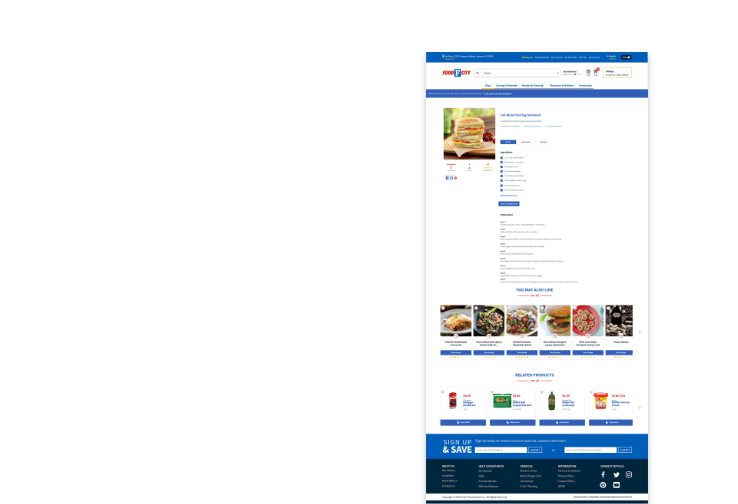
Wellness Club — Child and Teen Nutrition
Abingdon, VA. -
Thursday, Aug 1, 2024.
Written by: Nicole Pazdziorko, RDN, LD, Food City Dietitian
Healthy food choices during childhood and adolescence help to lay the foundation for good habits and optimal health in adulthood. Like adults, children and adolescents require a well-rounded diet for proper development, the pillars of which include a variety of fruits and vegetables, whole grains and protein and dairy foods, while providing adequate nutrients to fuel growth and higher levels of activity.
Focus on Choices with Calcium and Vitamin D
Children in the United States tend to under consume calcium, vitamin D, potassium and fiber, while exceeding recommended intakes for sodium, saturated fat and added sugar. Of noteworthy concern for children and adolescence is inadequate calcium and vitamin D intake. While essential in all stages of life, these nutrients have a uniquely critical role for developing strong and dense bones during the growing years. Their importance is accentuated for female adolescents, due to a greater risk for developing osteoporosis later in life. To help meet nutrient needs, children ages 9-18 should consume three servings of dairy foods per day. A serving of dairy can be eight ounces of milk or fortified soy milk, eight ounces of yogurt or 1 ½ ounces of cheese. To achieve adequate vitamin D intake, look for dairy choices that are fortified with vitamin D, fortified breakfast cereals, egg yolks, and mushrooms exposed to UV light.
Find at Food City:
• Full Circle Market 1% Milk Fortified with Vitamins A and D
• Food Club Nonfat Plain Greek Yogurt
• Food Club Low-fat Cottage Cheese
• Food Club Toasted Oats Cereal
• Mushrooms Exposed to UV Light
Encourage a Variety Fruit and Vegetables
Fruits and vegetables contribute vitamins, minerals, phytonutrients and fiber to the diet, essential for maintaining health and fueling proper development in kids. Studies show that increased fruit and vegetable consumption in childhood is associated with lower rates of obesity and cardiovascular disease and better overall health later in life. Minimum recommended daily intake for adolescent girls is 1 ½ cups of fruit and 2 ½ cups of vegetables and 2 cups of fruit and 3 cups of vegetables for adolescent boys. Nationally, only 7% meet this recommendation for fruit, and 2% meet the recommended intake for vegetable consumption. Encourage children and adolescents to consume a variety of different types and colors of fruits and vegetables for a balance of nutrients. Look for conveniently packaged fruits and vegetables with no added sugar, like canned fruit in 100% juice, frozen fruits for smoothies, and incorporate vegetables into regular meals.
Find at Food City:
• Food Club Cherry Mixed Fruit in 100% Juice
• Frozen Unsweetened Sliced Peaches
• ShortCuts Broccoli Snack Cup
Offer Beverages Without Added Sugar
Added sugars account for 11 to 15% of children’s total calories, and 15-25% of those come from sugar-sweetened beverages. This number increases to 32% in teens. Increased sugar sweetened beverage intake is associated with higher rates of obesity, type 2 diabetes, heart disease and poor dental health. The Dietary Guidelines for Americans recommends limiting added sugars to no more than 10% of total daily caloric intake, which translates to no more than 50 grams of added sugar for a 2,000 calorie diet. To help reduce intake of added sugars, focus on water, including plain, flavored and seltzer waters without added sugars, try low-fat unsweetened milk or fortified soy milk with meals and 100% fruit juice within recommended amounts – about 4 ounces of juice.
Find at Food City:
• Food Club 100% Orange Juice with Calcium and Vitamin D
• Hint Pineapple Flavored Water
Aiming to encourage good food choices at an early age helps to set the stage for maintaining good health across the lifespan.












